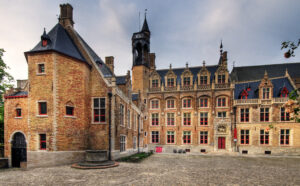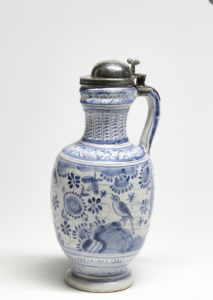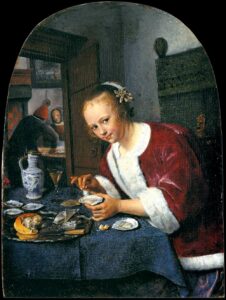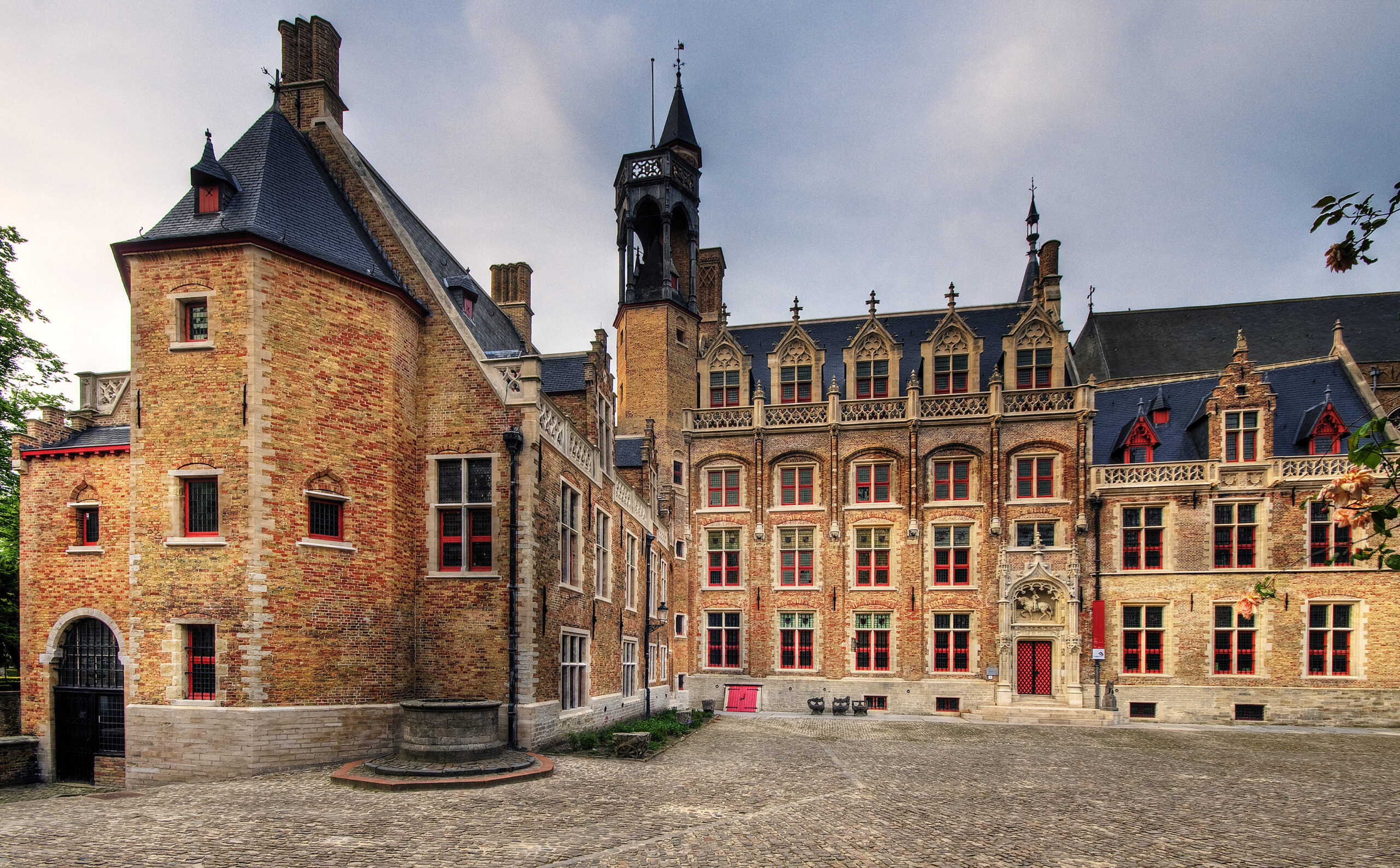
The Gruuthusemuseum is located in Bruges, Belgium. The museum houses its collection in the medieval Gruuthuse, this used to be the house of Louis de Gruuthuse. Louis was an important Flemish man and Lord during the 15th century. Lord of Gruuthuse, Prince of Steenhuijs, bibliophile, soldier and nobleman are all titles connected to his name.
In the 13th century, a wealthy family from Bruges likely won the right to tax gruit and built a building to store it. Gruit is a mixture of herbs used for beer, making it bitter and adding flavour. Nowadays hops is used and replaced gruit. 
Two centuries later, ancestors of Louis changed the building in to a luxury family home, the family also changed their name to Van Gruuthuse (From the Gruit house). The building didn’t stop changing. When Louis was the head of the house he added a wing that connects the house to the Onze-Lieve-Vrouwekerk (Church of Our Lady).
The Gruuthuse is a museum nowadays and has a wide range of objects in its collection. Art from the 15th century up until the 19th century. The museum has both a collection of everyday tools and utensils and the interior of a wealthy family’s home as it was in the late Middle Ages. Ceramics, weapons, musical instruments, bobbin lace, objects made of gold and silver, and furniture are all on display.
Between all these objects a beautiful early 17th century Delft jug is to be found. The Jug is beautifully decorated with birds and flowers in blue and white and has a silver cover made in Bruges. On the cover there is a coat of arms of abbot Campmans and motto “Deo Duce” engraved, this means God is my leader.
A slightly similar jug was in the former Aronson collection, illustrated in Dutch Delftware, Queen Mary’s Splendor, n. 2, p. 8. This jug is attributed to De Porceleyne Schotel (The Porcelain Dish) Factory. These jugs were made between 1630 and 1650.
In Dutch still life paintings from this period, jugs like these are often depicted. Jan Steen painted ‘Het oestereetstertje’ in c. 1658-60. On this painting a young lady eating oysters is depicted with in the background a blue and white jug, similar to the jug in the Gruuthusemuseum.




